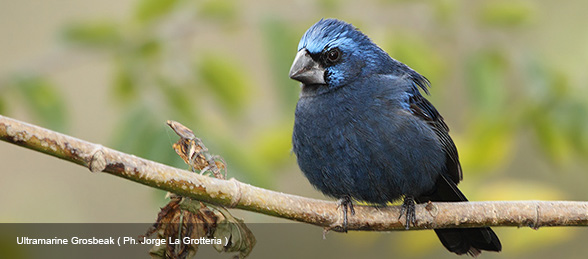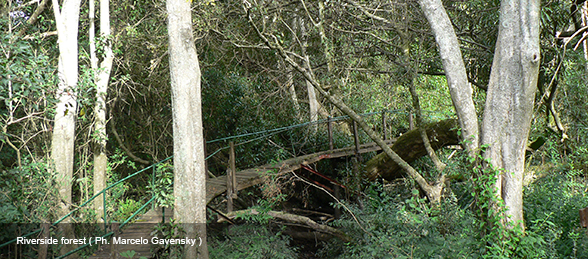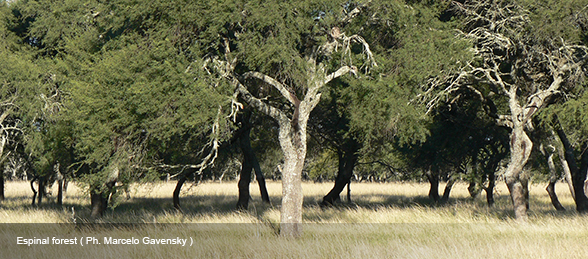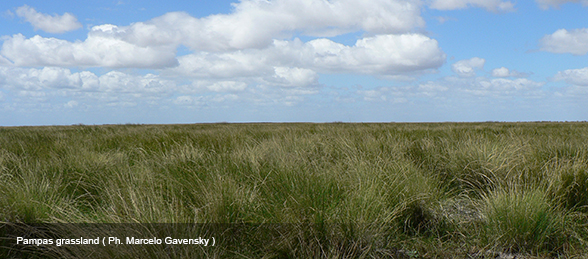General Info
GO TOP
The city of Buenos Aires lays in a very special part of Argentina. Despite having a temperate weather, the presence of La Plata river (or “River Plate” as it was called by the first british sailors that navigated on it), gives to this area a particular biodiversity.
La Plata River basin is the second largest in South America, only after the Amazon basin (the largest basin on Earth), and its origins are located in the very heart of the continent, with water flowing down from many countries such as Bolivia, Paraguay, Brazil, Uruguay and, of course, most of central north, north-east and north-west Argentina, until it finds the mouth of the basin (that ends in the Atlantic ocean) in La Plata river, which is actually an enormous estuary. This is in fact one of the very few cases when a river (or basin) flows down from a tropical-subtropical region to a temperate area, and since there are rainforests in the northern region of the basin many seeds of their trees and plants float down the river, growing in the sides of it, creating what we call a “riverside forest” (also known as “gallery forest”). This forest (and the basin itself) is a real green corridor that connects places such as the Parana rainforest found in north-east Argentina (in the area of Iguazu falls) with Buenos Aires, and many species from there find here their southernmost distribution border. For this reason, in BA we get species such as the Diademed Tanager, Gray-throated Warbling-finch and Mottle-cheeked Tyrannulet among the birds, but also epiphytic orchids, colorful butterflies such as the beautiful “eighty”, fig-trees that kill their host plants after growing on them, and even piranha fish in the summer.

But, although its high importance in terms of biodiversity, the riverside forest covers a very narrow and discontinuous area along the river, finding its southernmost still preserved patch in Punta Lara natural reserve, about 80 kilometres south of Buenos Aires. This is also the southernmost rainforest of subtropical origin (Amazonic domain) in South America.

A wider but still not very large strip, right above the riverside forest (in a bit higher, drier land), constitutes the Espinal (thorny) forest. With Chaco origin, it is often considered to be a less biodiverse Chaco forest, but this could give you a wrong idea if you haven't been to the Espinal nor real Chaco forest before, because it is a still very biodiverse forest and one of the best habitats in the area for birdwatching since it is mainly an open low forest with not just an incredible diversity of birds but even a high number of them in terms of abundance. Almost inexistent in the urban reserves and the closest areas near the city, it can be found in a still well preserved way in places such as Punta Indio, near Samborombon bay, where its dominant species is a tree called “Tala”, and even better in the south of Entre Ríos province, with a predominance of an acacia-like tree called “Ñandubay”. Many wetlands and patches of Pampas are found within the Espinal forest, creating a very diverse place and the real birding hotspot in the area.

Finally, but not less important at all, one of the most endangered habitats in Argentina was formerly the largest one in this area: the Pampas grassland. Literally a “sea of grass” in historic times, now there are only a few places where it can still be found in a well preserved way, although many of its originary species of fauna are now extinct or seriously endangered (such as the Pampas Deer).
An ecosystem almost endemic to Argentina, it is also the home for many almost-endemic species (species only found in one or two other countries at most) of birds too, such as the rare Dot-winged Crake, Hudson's Canastero and the critically endangered Pampas Meadowlark.
The list would not be complete without mentioning the marshlands and lagoons of the area as an ecosystem itself (although found surrounded by any of the previously mentioned ecosystems), together with the reeds, cattails and other plants that grow in their costs. Some of the most interesting specialties of Buenos Aires can be found here, such as the Straight-billed Reedhaunter and Bay-capped Wren-spinetail, among others. In the lagoons (sometimes very large) many species of ducks, coots, grebes and swans can be found together. These lagoons and water ponds are also used by lots of migratory waders that arrive to the area in our spring-summer and go back north again in the beginning of fall. Then, the closest Argentine sea coast to Buenos Aires is found in the city of San Clemente del Tuyú, about 300 kilometres from BA. Near it there is one of the best places for watching migratory waders and other shore birds in the area, called Punta Rasa. It is located in the very end of La Plata river, where its waters mix with the ocean. The shore in the area shows colonies of crabs, and the many invertebrates that live buried in the mud are what the migratory waders intensively look for in this strategic stop on their way to their breeding and wintering territories. This is also the best place for finding the Olrog's Gull, another almost endemic bird of Argentina.
All of these special conditions make of Buenos Aires and its surroundings an amazing place for birding with over 350 species, one third of the birds of Argentina.